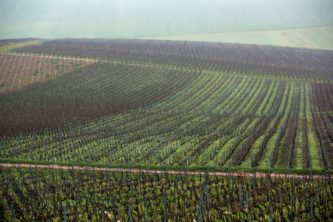
Russian oligarchs are facing a shortage of champagne after French producers temporarily cut off supplies to the country over a new law that will force them to label their drinks as “sparkling wine”.
Last week, President Vladimir Putin signed off on legislation stating that only wine produced in Russia could be labelled as “champagne”, while foreign makers would have to rebrand their bubbly.
Neither the President nor Parliament explained why Russia needed such a law.
The “champagne” controlled designation of origin is governed by very strict rules in France, which state that the wine must originate from a small area in the Champagne region, be made with approved grape varieties and mature for a minimum of 15 months.
Moet Hennessy, which produces drinks such as Moet & Chandon, Dom Perignon and Veuve Clicquot, told partners in Russia that it would have to halt distribution.
In a letter to local businesses, Moet Hennesy, part of the French luxury goods group LVMH, said stocks of its champagnes would therefore be at an “extremely low level”, exacerbated by a wider drop in imports over 2021.
Later, the company told Bloomberg that it would add a “sparkling wine” mention on the back label of their bottles, and resume deliveries once these changes were made.
Olga Sokolova, a sales director at Vinicom, which imports and distributes foreign wine in Russia, denounced the situation as absurd as she shared the letter from Moët Hennessy on social media.
“This seems like it’s fake, but it’s true,” she said. “From today, black is now white, and white is black.”
Others online were equally damning of the change in the law, with the exiled oligarch and Kremlin opponent Mikhail Khodorkovsky saying he thought “the whole champagne thing was a joke”.

Sergei Mironov, a restaurant owner, quipped that Moscow’s next step would be to ban Scots from using the word “whisky”.
Other experts questioned whether Russia had the legal jurisdiction to force foreign products to rebrand.
Vadim Drobiz, director of the Centre for the Study of Federal and Regional Alcohol Markets, told the business newspaper RBK that about half of the 330 million litres of still and sparkling wine imported to Russia every year could be affected.
The new law came as Putin signed a decree stating that the “Westernisation” of Russian culture was one of the primary security threats to the country.
Moscow banned the import of Western cheeses, meats and other food products in 2014, as a response to European and US sanctions over the annexation of Crimea.
The ban motivated local producers to develop their own versions of European goods, such as “Russian parmesan”.

In the 1920s the USSR created a cheaply produced “Soviet Champagne” as a way of bringing luxury goods to the masses.
In recent years, a growing number of wine-makers have launched in southern Russia.
French media has dubbed the import spat the “champagne war” or the “bubble war”.
Champagne producers have long been extremely protective over their brands. Last week, French wine producers won a legal battle to prevent an ice cream from being called “champagne-flavoured”, according to a German court, after a long battle against the supermarket giant Aldi.
Theo Merz, Daily Telegraph UK | 5 July 2021



 Waimea Estates is one of Nelson’s larger producers with over 140 hectares of their own vineyards. The cool climate and alluvial soils of Nelson’s Waimea plains combined with the highest sunshine hours in New Zealand allow vibrant, fruit-focused wines to be made.
Waimea Estates is one of Nelson’s larger producers with over 140 hectares of their own vineyards. The cool climate and alluvial soils of Nelson’s Waimea plains combined with the highest sunshine hours in New Zealand allow vibrant, fruit-focused wines to be made.



